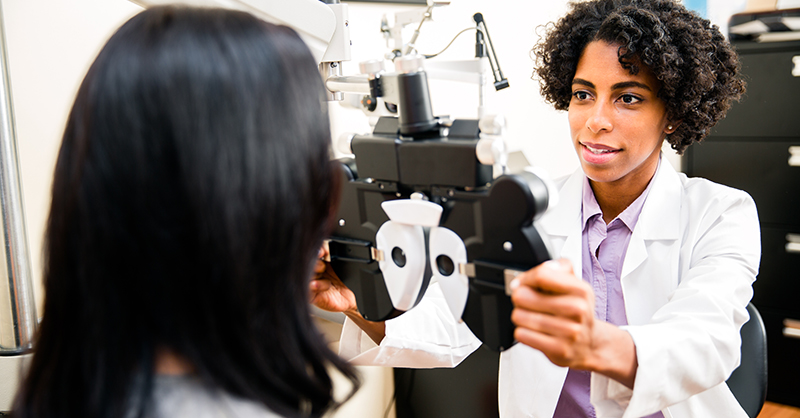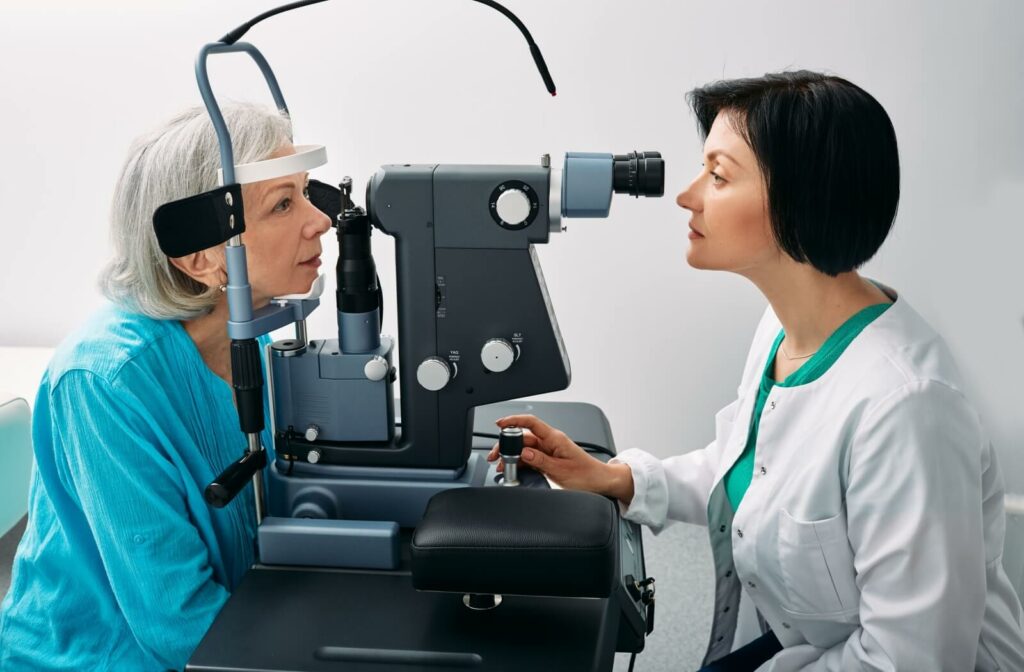The Value of Regular Check-Ups with an Eye Doctor Optometrist
The Value of Regular Check-Ups with an Eye Doctor Optometrist
Blog Article
Recognizing the Comprehensive Duty of an Eye Doctor in Modern Eye Treatment
In the developing landscape of healthcare, the extent of an eye doctor's duty has actually substantially widened, prolonging well past the confines of traditional vision modification. With improvements in modern technology and a boosting focus on precautionary care, optometrists are important in diagnosing and handling chronic eye conditions, while likewise engaging in early disease discovery. Their know-how in advanced diagnostic strategies such as optical coherence tomography is vital. But how do these obligations intersect with their function in advertising total eye health and wellness, and what does this mean for individual results in a collaborative healthcare atmosphere?
Expanded Range of Practice
In recent times, the duty of optometrists has actually progressed considerably, with lots of specialists currently embracing a broadened extent of practice that expands beyond conventional eye exams. This evolution reflects the growing recognition of optometrists as main health care service providers in the field of eye treatment. Their duties now encompass a variety of services, consisting of recommending medications for ocular conditions, taking care of persistent eye diseases, and doing minor operations. This shift has been driven by developments in optometric education and learning, boosted scientific training, and the enhancing demand for thorough eye treatment solutions, specifically in underserved areas.
Further, optometrists are now extra associated with joint care, functioning carefully with ophthalmologists, health care medical professionals, and various other healthcare specialists to make certain holistic patient treatment. This interprofessional partnership is important in handling complex instances that require a multidisciplinary approach. Additionally, eye doctors are playing a crucial duty in public wellness initiatives, such as vision testings and eye health education, targeted at enhancing community health and wellness end results.
The broadened scope of technique for optometrists not only boosts their capability to offer extensive treatment yet also addresses the expanding need for easily accessible and reliable eye treatment services, adding to general medical care renovations.
Early Disease Detection
Early discovery of eye illness is significantly becoming a prime focus in the expanded function of eye doctors. As main eye treatment carriers, eye doctors are distinctly positioned to determine early signs of ocular conditions such as glaucoma, macular degeneration, diabetic retinopathy, and cataracts. This essential duty is important, as early diagnosis can considerably improve the administration and prognosis of these problems, potentially avoiding vision loss and boosting client results.
Eye doctors utilize comprehensive eye examinations to detect refined adjustments in vision and eye health and wellness. The ability to identify early signs of systemic health issues, such as high blood pressure and diabetes, via ocular indicators better underscores the significance of routine eye check-ups.
Additionally, eye doctors play a vital role in patient education and learning, stressing the importance of routine eye examinations as part of total wellness maintenance. By promoting an aggressive approach to eye care, optometrists add dramatically to public health, guaranteeing illness are captured and taken care of effectively before they can advance.
Advanced Diagnostic Techniques
Advanced analysis techniques have revolutionized the method of optometry, making it possible for specialists to detect and monitor eye diseases with unmatched accuracy. Technologies such as optical comprehensibility tomography (OCT) provide high-resolution, cross-sectional images of the retina, promoting early detection of problems like glaucoma and macular degeneration.
An additional crucial improvement is electronic retinal imaging, which captures comprehensive sights of the retina making use of high-def cams. This innovation is vital in determining changes in retinal framework in time, therefore helping in the monitoring of conditions like diabetic retinopathy. Visual area screening, improved by computer-aided systems, enables accurate mapping of a client's visual field, necessary in diagnosing and tracking glaucoma development.
Corneal topography, one more significant diagnostic device, generates topographic maps of the cornea's surface area. This is especially useful in suitable get in touch with lenses and preparing refractive surgery. These advanced diagnostic techniques jointly make it possible for eye doctors to supply proactive, targeted care, making certain better individual outcomes and enhancing their crucial duty in eye health management.
Managing Persistent Eye Problems
Managing chronic eye problems is a foundation of optometric treatment that requires an extensive understanding of various ocular conditions and their lasting implications. Eye doctors play a pivotal role in diagnosing, handling, and monitoring problems such as glaucoma, diabetic person retinopathy, and age-related macular degeneration. These problems, if left unattended, can cause significant aesthetic disability or loss of sight, highlighting the vital significance of continuous treatment and monitoring.
Optometrists use an array of diagnostic devices, including optical coherence tomography (OCT), aesthetic area testing, and fundus photography, to examine the development of these persistent conditions. By carefully monitoring adjustments in ocular wellness, optometrists can readjust therapy plans to mitigate disease progression. This might entail prescribing medications, suggesting way of living modifications, or collaborating with eye doctors for medical treatments when required.

Role in Preventive Care
Preventive care is an essential aspect of optometry that focuses on keeping eye health and stopping the start of ocular diseases. Optometrists play a critical role in very early detection and prevention, using routine eye examinations to identify threat aspects and subtle adjustments in eye health and wellness. Opticore Optometry. These exams are not just about vision adjustment but include a comprehensive analysis of eye functions and structures, enabling the recognition of conditions such as glaucoma, cataracts, and macular degeneration at a very early phase
In enhancement to diagnostics, eye doctors educate explanation patients on way of life selections that advertise eye wellness, such as correct nutrition, UV defense, and the importance of routine eye exams. They recommend on the proper use digital gadgets to stop electronic eye pressure, an expanding concern in the electronic age. Optometrists likewise provide advice on safety eyewear for work-related and leisure activities, alleviating the risk of injury.
Preventive eye treatment prolongs to systemic health and wellness concerns that materialize in the eyes, such as diabetes mellitus and hypertension. By teaming up with other healthcare experts, eye doctors contribute to holistic patient treatment, emphasizing the interconnectedness of ocular and systemic health. This positive strategy is crucial in guarding aesthetic acuity and total wellness.
Final Thought
Optometrists now inhabit a critical function in modern-day eye treatment, defined by an expanded extent that includes detecting and taking care of chronic eye problems, recommending medicines, and performing small medical treatments (Eye Doctor Optometrist). Their competence in very early condition discovery is improved by innovative analysis strategies such as optical coherence tomography and digital retinal imaging. By emphasizing preventative treatment and individual education and learning, eye doctors add significantly to overall eye health, working together with various other medical care specialists to make sure efficient and thorough client results

In enhancement to diagnostics, optometrists inform people on way of living selections that advertise eye wellness, such as correct nourishment, UV security, and the importance of normal eye check-ups.Preventive eye treatment expands to systemic health concerns that manifest my company in the eyes, such as diabetes and hypertension.Optometrists now inhabit a critical duty in modern-day eye care, identified by an increased extent that consists of detecting and taking care of persistent eye problems, prescribing medicines, and doing minor surgical procedures.
Report this page